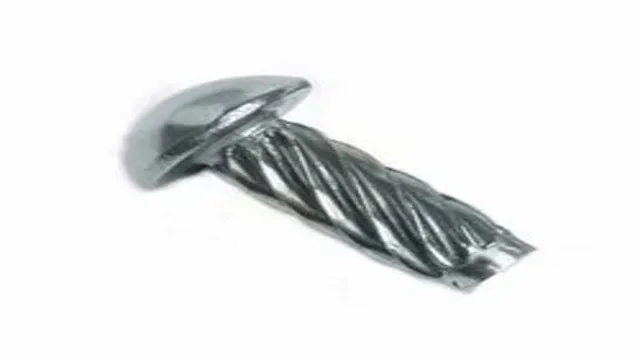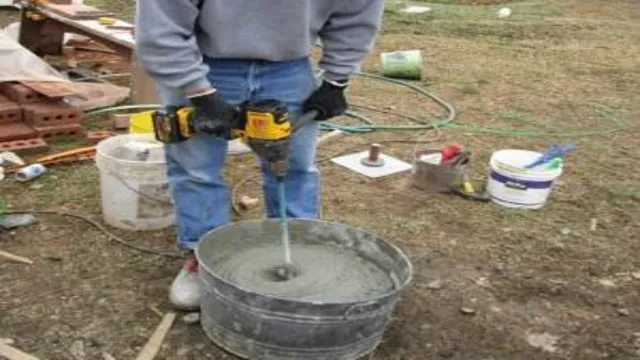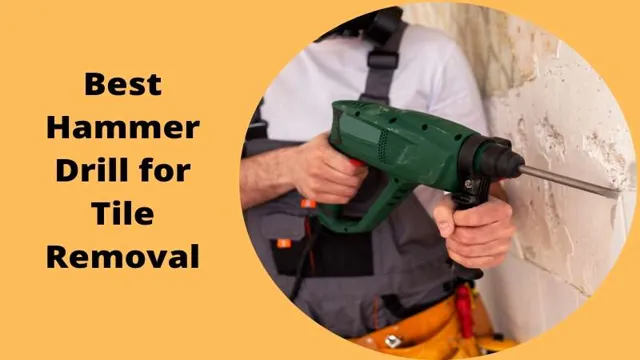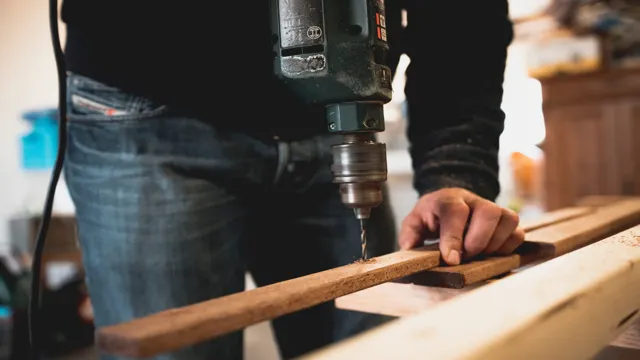Can I Use a Hammer Drill as a Regular Drill? Pros and Cons Explained
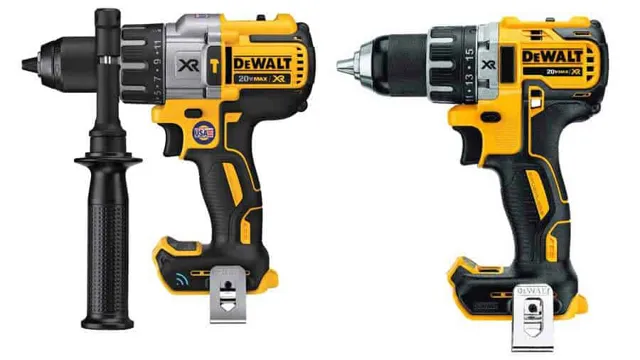
Have you ever found yourself needing a power drill, but only having a hammer drill on hand? You may be wondering, can you use a hammer drill as a regular drill? The short answer is yes, but with a few caveats. While both tools have a similar appearance, there are some key differences that can affect their use. In this blog post, we’ll explore the similarities and differences between a hammer drill and a regular drill, as well as provide some tips on how to use a hammer drill as a regular drill effectively.
So, grab your drill bits and let’s dive in!
What is a Hammer Drill?
Many DIY enthusiasts often wonder if they can use a hammer drill as a regular drill. Hammer drills are primarily designed for drilling through tough materials such as concrete, brick, and stone. They feature an internal hammering mechanism that delivers rapid-fire blows as the drill bit rotates, allowing for easier penetration through hard surfaces.
However, the same feature that makes them perfect for those tough jobs, make them less than ideal for everyday tasks like drilling holes in wood or drywall. A hammer drill will work as a regular drill, but it may produce a rougher hole with more debris and could be a bit unwieldy. So, if you plan on using your hammer drill for light duty work like drilling holes in soft materials, it is best to disable the hammering feature to prevent any damage and get a smoother finish.
How a Hammer Drill Works
A hammer drill is a powerful tool that can be used for a variety of projects that require drilling through tough materials like concrete and masonry. What sets the hammer drill apart from a regular drill is that it uses both rotational force and percussive force to drill through hard surfaces. The drill works by using a piston that moves back and forth inside the tool’s cylinder.
As the piston moves forward, it compresses air in the cylinder, which then sends a forceful blow to the drill bit. This percussive force helps to break up the hard material, making it easier for the bit to penetrate. At the same time, the drill’s motor is rotating the bit, so it can gradually drill through the material with less effort.
Hammer drills can be powered by electricity or gas, and they come in a variety of sizes and styles for different applications. Whether you’re working on a DIY project or a professional job site, a hammer drill can make drilling through tough materials so much easier.
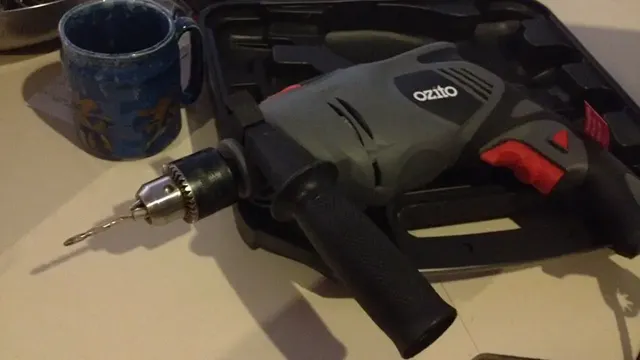
Advantages of Hammer Drills Over Regular Drills
A hammer drill is a power tool that is specifically designed for drilling through tough surfaces like concrete, brick, and stone. How does it work? The hammer drill has a hammering function that delivers a rapid succession of small impacts to the drill bit, which helps break through the hard surface more easily. Unlike regular drills, hammer drills can bore holes into hard materials quickly and effortlessly, making them suitable for heavy-duty tasks.
One major advantage of using a hammer drill is its ability to generate more power, making it possible to drill deeper holes without exerting too much effort. Additionally, hammer drills come in different sizes and speeds, allowing users to choose the most appropriate one for their specific needs. So, if you’re looking for a tool that can handle tough drilling jobs with ease, a hammer drill is the perfect tool for you!
Can a Hammer Drill be Used as a Regular Drill?
If you’re wondering whether you can use a hammer drill as a regular drill, the answer is yes, but with some limitations. A hammer drill is designed for drilling into tough materials like concrete, stone, or masonry using a piston-like mechanism that delivers a forward thrust along with a spinning motion. However, it can also be used to drill holes in wood, metal, and plastic if you switch off the hammer function.
Most hammer drills come with a switch that allows you to toggle between hammer mode and regular drilling mode, making it possible to use them like a regular drill. However, keep in mind that a hammer drill may not be as efficient or accurate as a regular drill when drilling into soft materials, as it may cause the bit to wander or damage the surface. Additionally, hammer drills tend to be heavier and louder than regular drills, so they may not be suitable for all jobs.
In summary, you can use a hammer drill as a regular drill, but it’s best to consider the material and job requirements before doing so.
Hammer Drill vs. Regular Drill: Key Differences to Consider
When it comes to power tools, many DIY enthusiasts are often confused between a hammer drill and a regular drill. Both tools have their own unique features and can be used for different applications. However, one of the most common questions asked is, can a hammer drill be used as a regular drill? The answer is yes.
In fact, most hammer drills come with a switch that allows you to turn off the hammering action, which converts it into a regular drill. This makes it a versatile tool that can be used for various drilling tasks around the home. However, keep in mind that a hammer drill is designed to handle tougher materials like concrete and masonry, while a regular drill is better suited for lighter materials like wood and metal.
So, if you’re looking to use a hammer drill as a regular drill, make sure to use the appropriate drill bit and adjust the speed settings accordingly.
When to Use a Hammer Drill and When to Use a Regular Drill
Hammer drill, regular drill, can a hammer drill be used as a regular drill Hammer drills and regular drills are commonly used for drilling holes, but they have different applications. Hammer drills are designed to drill into hard surfaces such as masonry, concrete, and brick. They have a hammering function that provides a more powerful force than a regular drill, allowing them to break through tough materials.
Regular drills, on the other hand, are ideal for drilling holes in softer materials such as wood, plastics, and light metals. While hammer drills can be used as regular drills, regular drills cannot be used as hammer drills due to their lack of hammering function. It’s important to note that using a hammer drill on soft materials may cause damage, and using a regular drill on hard surfaces will be less effective and may damage the drill bit.
It’s also important to choose the right bit for the material being drilled. In summary, choose a hammer drill for hard materials and a regular drill for soft materials. While a hammer drill can be used as a regular drill, it’s not recommended to use a regular drill for hard surfaces.
Always use the appropriate drill bit and take necessary safety precautions when drilling.
How to Use a Hammer Drill as a Regular Drill
Yes, a hammer drill can be used as a regular drill. If you have a hammer drill and need to use it as a regular drill, all you need to do is turn off the hammer function. Hammer drills have an extra function that makes the drill bit move in a back-and-forth motion, which is great for drilling through brick, concrete or other tough materials.
But, if you are using the hammer drill to drill into wood or metal, the hammer function is not necessary and can actually damage your materials. To turn off the hammer function, simply flip the switch or button on the hammer drill that controls this feature. Once you have switched off the hammer function, your hammer drill functions just like a regular drill, drilling through materials with ease.
Just remember to use the appropriate drill bit for whatever material you are drilling into. By turning off the hammer function, you will save your materials and ensure that your hammer drill remains effective for its intended use.
Safety Measures while Using a Hammer Drill as a Regular Drill
Many people wonder if they can use their hammer drill as a regular drill. The answer is yes, you can use a hammer drill as a regular drill, but there are some important safety measures that you should take into consideration. First and foremost, you must make sure that the hammer function is turned off before you start drilling.
Using a hammer function when it’s not needed can damage your drill bit and even the material you’re drilling into. Pay extra attention to the depth of the hole you’re making, since hammer drills may make deeper holes than what you intended. Another crucial safety measure is to wear safety goggles, a dust mask, and earplugs, as hammer drills create a lot of debris, dust, and noise.
Lastly, make sure to firmly secure the material you’re working on to prevent it from spinning or moving around while you’re drilling. Overall, if you’re using your hammer drill as a regular drill, taking these safety measures will ensure a safe and efficient drilling experience.
Ensuring Proper Safety Measures During Operation
When it comes to using a hammer drill as a regular drill, it’s important to ensure proper safety measures are in place. While a hammer drill can be used to drill holes just like a regular drill, the hammer action adds an extra level of force that can make it more dangerous than a standard drill. First and foremost, always wear appropriate safety gear, including goggles and ear protection.
Make sure the drill bit is securely fastened in the chuck, and take care not to apply too much pressure when drilling to prevent the drill bit from getting stuck. Additionally, it’s important to choose the right bit for the job, as using the wrong size or type of bit can cause the drill to become unstable and potentially dangerous. By taking these precautions, you can safely and effectively use your hammer drill as a regular drill for a variety of projects.
Maintenance Tips for Hammer Drills When Used as Regular Drills
Hammer drills are a versatile tool that can be used not only for hammer drilling but also as regular drills. However, when using a hammer drill as a regular drill, it is important to take certain safety measures to avoid accidents. Firstly, make sure to wear protective gear such as safety glasses and gloves.
Secondly, ensure the drill bit is securely fastened in the drill chuck to prevent it from coming loose during drilling. Thirdly, avoid drilling larger holes than the capacity of the drill bit as it may cause the bit to snap or the drill to overheat. Lastly, keep the drill away from water sources to prevent electrocution.
Following these safety measures will ensure a safe drilling experience when using a hammer drill as a regular drill.
Conclusion
In conclusion, asking whether a hammer drill can be used as a regular drill is like asking whether a hammer can be used to screw in a nail. Sure, you could probably make it work, but it’s not going to be the most efficient or effective option. If you want to drill holes, stick to a regular drill.
If you want to tackle tougher surfaces like concrete, invest in a hammer drill. As they say, use the right tool for the job!”
FAQs
What is the difference between a hammer drill and a regular drill?
A hammer drill is specifically designed to drill through harder materials like concrete and masonry, while a regular drill is more versatile and can be used on a wider range of materials.
Can I use a hammer drill as a regular drill?
Yes, you can use a hammer drill as a regular drill by disabling the hammer function and using it in the regular drilling mode.
What types of projects require a hammer drill?
Projects that require drilling into hard materials like concrete, masonry, or brick often require a hammer drill.
Can I use regular drill bits on a hammer drill?
Yes, you can use regular drill bits on a hammer drill when it is set to regular drilling mode.
What safety precautions should I take when using a hammer drill?
Make sure to wear safety glasses, ear protection, and a dust mask when using a hammer drill. It’s also important to secure the material you are drilling into place to prevent it from slipping.
Are hammer drills more powerful than regular drills?
Yes, hammer drills are typically more powerful than regular drills because they are designed to drill into harder materials.
Can a hammer drill be used for screwing or fastening?
While a hammer drill is primarily designed for drilling, some models come with a screwdriving function that can be used for light screwing or fastening tasks.

